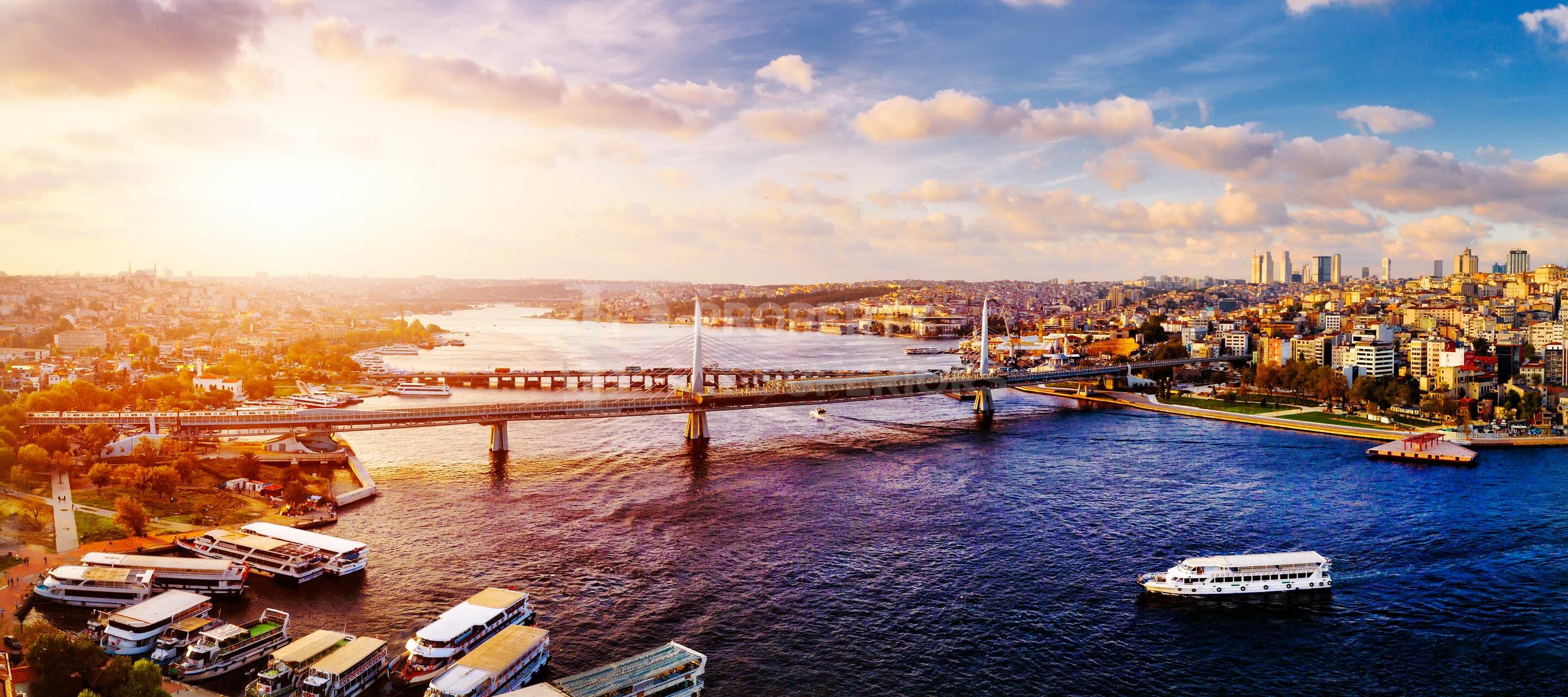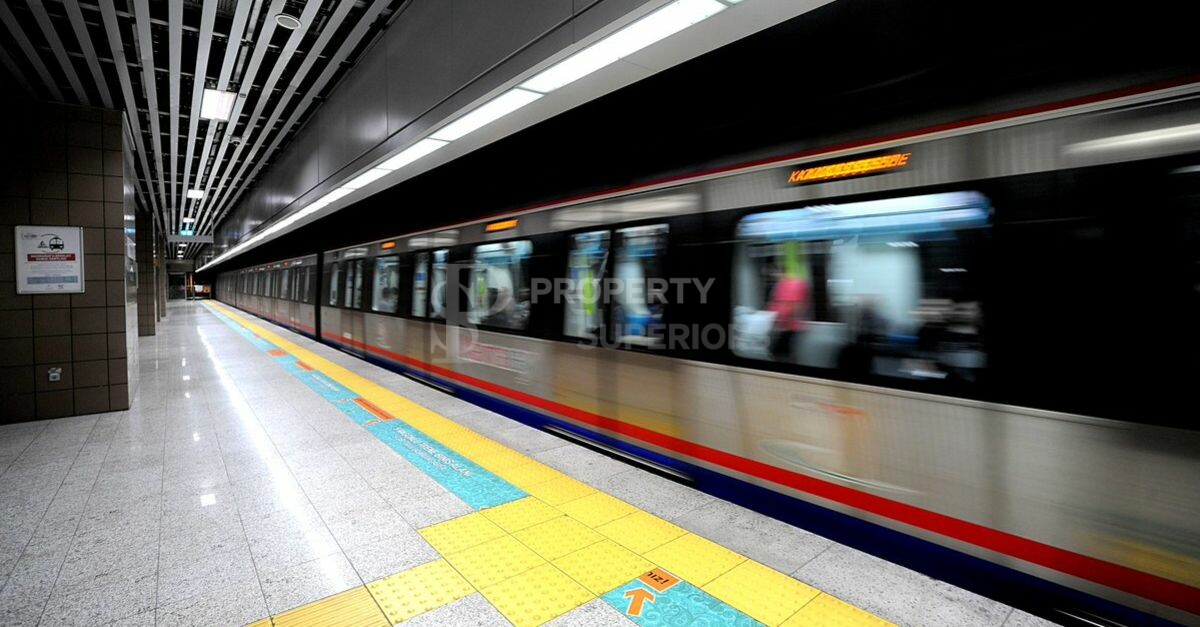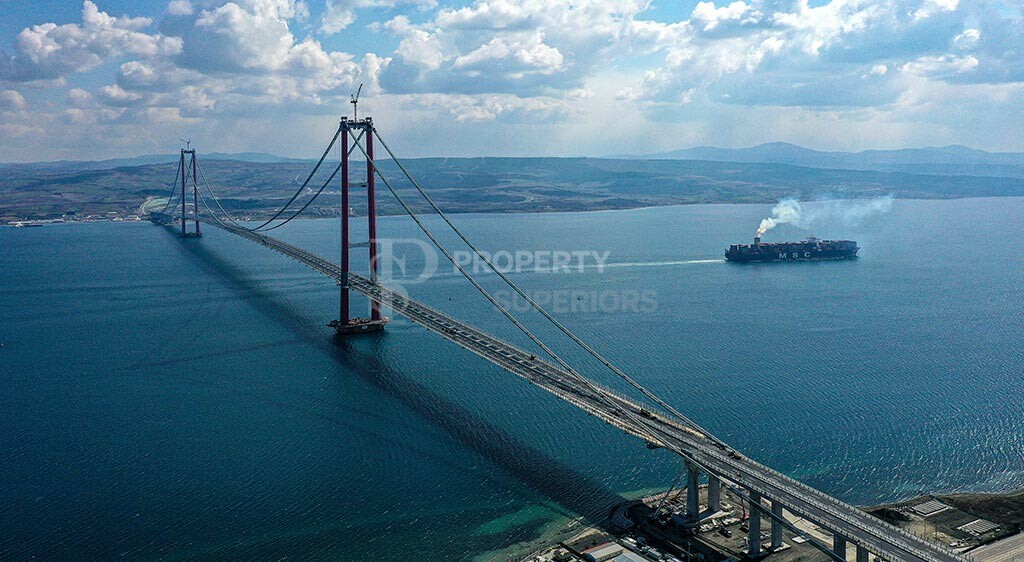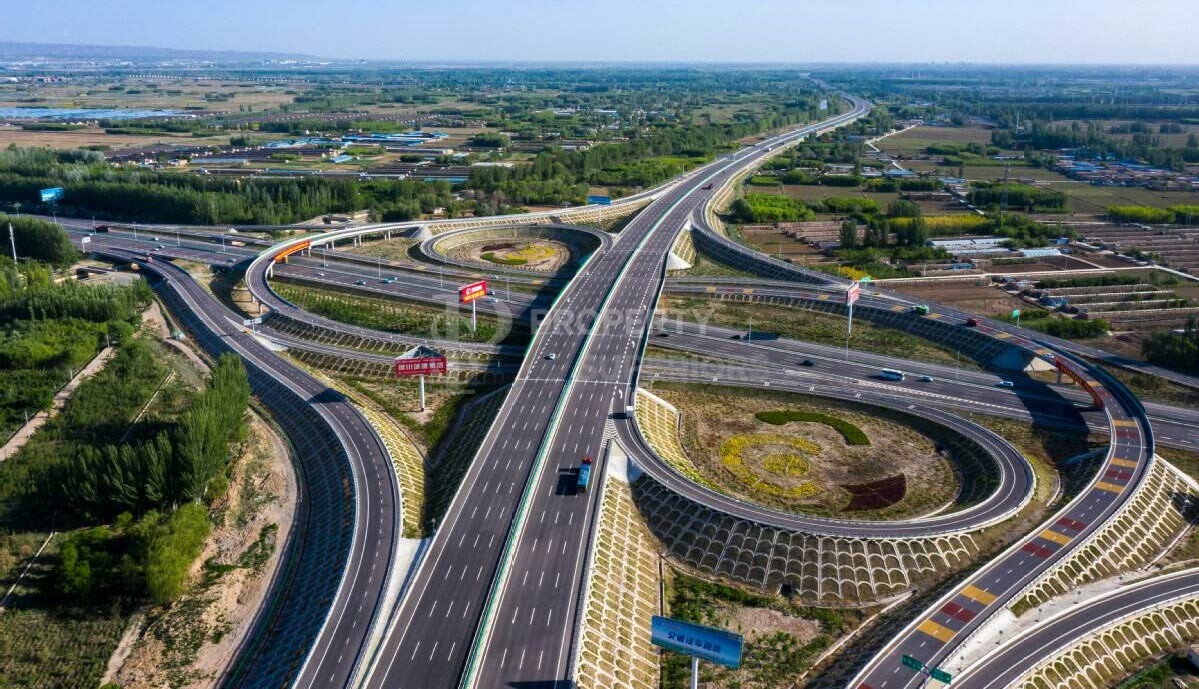
Turkey has been adopting a clear approach since the beginning of the third millennium, that is, 23 years ago, which consists of building and developing infrastructure projects according to modern foundations that suit its geographical nature and its location on the Anatolian plateau and in the Marmara region. The infrastructure enhances the strength of the Turkish economy and constitutes an impetus for more investments in Turkey.
What is meant by the concept of "infrastructure"?
Infrastructure is an organizational structure for the operation of society and its accompanying public services that are involved in the development of countries’ economies. Infrastructure can be defined as a group of interconnected structural elements that provide frameworks that support the overall structure of development. This term often refers to technical structures that support society, such as roads. Bridges, tunnels, airports, medical, educational, and economic service buildings, water and sanitation resources, electrical networks, and telecommunications, also called the physical components of interconnected systems that provide the necessary goods and services needed to enable or sustain the development of societal living conditions.
What is the most important infrastructure projects in Türkiye between 2000-2023?
Turkish governments have been working since the year 2000 until today to create what is known as “New Turkey” in line with global development systems at all levels, based on the establishment and development of infrastructure commensurate with Turkey’s geographical area and geopolitical position, and the strengthening of its local economy and investment opportunities in Turkey in the interest of the leadership role. Turkey is considered one of the industrial and commercial economic countries driven by its location in the middle of the world and its investment attractions it. In this article, we will discuss the most prominent road, tunnel, and public transportation projects and their relationship to the economy and investment in Turkey and the effects they have on the real estate investment sector in Turkey. The most important infrastructure projects in Turkey:
Istanbul Metro:
It is a railway network for transporting people underground via a multi-vehicle train (metro), located in the Turkish city of Istanbul. It is operated and managed by the Istanbul Metro Company, affiliated with the Greater Istanbul Municipality. The Istanbul metro opened for the first time in 1989 and today includes 104 metro stations across the two continents. European and Asian stations for Istanbul, in addition to 64 other stations under construction.
Marmaray Istanbul:
Marmaray Istanbul connects Europe with Asia under the waters of the Bosphorus Strait, which operates public Istanbul metro trips for passengers from the city’s residents and visitors. It did not see the light before 2013 on a work and construction journey that began between 2002 and 2004.
The Marmaray Istanbul Metro starts from Halkali Station in European Istanbul to Gebze Station in Asian Istanbul, passing through several stations between the two continents.

Metrobus Istanbul:
The first phase of Metrobus Istanbul was opened in 2007, while all its phases were completed in 2012. The Metrobus means of transportation on the E-5 highway extends a distance of up to 50 km via dozens of buses operating on the line, and its trips operate through 40 stations in Istanbul, starting from Tuyap Station in Beylikdüzü district in European Istanbul, all the way to Kadıköy station in Asian Istanbul.
Eurasia Tunnel:
The Eurasia Tunnel connects the European and Asian parts of Istanbul and passes under the waters of the Bosphorus Strait. It is a tunnel designated for private cars via two-way routes, and shortens the time period from 100 minutes to only 15 minutes.
The Eurasia Tunnel extends over a length of 14.6 km, 5.4 km of which is under the waters of the Bosphorus. It opens from the “Qazlıçeşme” area in European Istanbul and reaches the “Göztepe” area in Asian Istanbul.
The tunnel features advanced lighting technologies and high-capacity ventilation systems, in addition to firefighting equipment that can be easily accessed, and its walls are covered with fire-resistant material, in addition to emergency evacuation systems. It also includes a 24-hour surveillance camera system, another for accident detection, and communications and alarm systems.
Yavuz Sultan Selim Bridge (3rd Bosphorus Bridge):
In Turkish, Yavuz Sultan Selim Köprüsü is the third bridge of the Bosphorus Strait. It is located in the north of Istanbul over the waters of the Bosphorus Strait and connects the two regions of Sariyer in European Istanbul and Beykoz in Asian Istanbul near the banks of the Black Sea.
Construction work on the Sultan Selim I Bridge began in 2013 and was opened in August 2016. It is considered one of the longest suspension bridges in the world.

Osman Gazi Bridge:
Osman Gazi Bridge is classified as the fourth longest suspension bridge in the world, with a length of 2,682 meters. It is considered the most important part of the highway project linking the states of Kocaeli, Yalova, Bursa, and Izmir. It was built over the Sea of Marmara between the states of Kocaeli and Yalova near the Turkish city of Istanbul.
The bridge passes over the Gulf of Izmit, with a length of 252 meters and a width of 35.93 meters. It shortens the travel distance between the two banks of the Gulf from two hours to just 6 minutes. The Osman Gazi Bridge was opened by Turkish President Recep Tayyip Erdogan in June 2016.
1915 Çanakkale Bridge:
Çanakkale Bridge (1915) extends across the Dardanelles Strait and connects the European and Asian continents with the longest central distance in the world, at a length of 2,023 metres. Construction work on the bridge began in 2017 with the aim of connecting the Malkara-Canakkale Highway. It carries the colors of the Turkish flag and symbolizes the Battle of Çanakkale. Which took place in the year 1915 and led to the liberation and independence of Turkey from the West in preparation for the establishment of the Turkish Republic later.
1915 Çanakkale Bridge was opened on 03/18/2023 as a sign of the height of the bridge tower being 318 metres.

Otoyol 7:
The Northern Marmara Highway was built in several stages, with a length of 398.4 km, linking the states of “Istanbul, Kocaeli, and Sakarya.” It is equipped with technological means and constructed in an engineering manner that reduces time, effort, and fuel, facilitates access between the three Turkish cities, maintains the safety of vehicles, and extends the life of their engines.
The Northern Marmara Highway starts from the “Kanali” site, west of Istanbul, passes through the states of Kocaeli and Sakarya from the north, and ends near the “Akyazi” region in the state of Sakarya. It consists of 3 main sections. All stages of the construction of the North Marmara Highway have been completed and it was fully opened in mid-2021.

Otoyol 5 (Istanbul-Izmir Motorway):
This road connects the cities of Istanbul, Bursa, and Izmir and shortens the arrival time between Istanbul and Izmir to only three hours instead of eight hours via regular roads. The Istanbul-Izmir highway connects the Aegean region to the Mediterranean Sea and is a modern road equipped with technological technologies and 24-hour monitoring. .
Istanbul Grand Tunnel:
A development project under construction that was announced for the first time in April of this year 2023 during the election campaign led by the ruling Justice and Development Party in Turkey. It is expected to be ready in the next few years. The tunnel that passes under the Bosphorus as its third tunnel and connects the European and Asian continents consists of 3 Floors:
- The first floor is designated for round-trip metro transportation.
- The second floor is an access road for private cars
- The third road is the private car access road.
In terms of designs and objectives, the Istanbul Grand Tunnel combines the two Eurasia Tunnels designated for cars and the Marmaray Tunnel designated for metro transportation.
What is the relationship between infrastructure development and the economy and investment in Türkiye?
We can link the establishment and development of infrastructure in Turkey to the local economy and investment in general and real estate investment in particular through the following points:
- The establishment and development of infrastructure in Turkey, especially bridges and tunnels, and the extension of more transportation networks, means prominent government interest in this vital sector, which has a direct impact on the Turkish economy and everything that surrounds it.
- Strengthening the local economy by preparing roads, bridges, and accompanying infrastructure, which contribute to increasing production, industry, and trade exchange and facilitate movement on highways inside and outside Turkey, gives strength and solidity to the economy and increases investor confidence in Turkey.
- Infrastructure projects are government projects that are developed by Turkish local authorities in cooperation with private companies and employ thousands, which means job opportunities for companies and individuals.
- Residential, commercial, industrial, and tourist properties are positively affected by the opening of development projects, especially roads, bridges, and public transportation, as they facilitate movement to and from those properties and the addresses to reach them become easier.
- The arrival of the subway, Metrobus, or even modern highways to an area increases its investment value and the value of the lands and real estate located there.
- Providing a Turkish city with infrastructure and development projects means that the Turkish government is interested in this city and thus attracts major government and private construction companies to build projects accompanying the infrastructure projects there.
- The Turkish government has been working for several years to establish entirely new cities with systems resistant to earthquakes and medical disasters and equipped with technological technologies, which contributes to giving a more modern life and road organization that is commensurate with the urban and technological development in Turkey and the world.
Turkey is not far from the developments taking place in the world in terms of urban development, reconstruction, construction, and development of infrastructure in a way that enhances its investment value and its location in the middle of the world and facilitates movement there by land, sea, and air and in response to the human factor of residents, residents and tourists in Turkey and the provision of all public, service and tourism facilities for the continuation of their livelihood.
Related posts:
The Turkish official gazette published on Tuesday, December 12, a Republican decision issued by the presidency of the Republic of Turkey and Turkish President "Recep Tayyip Erdogan" and bearing the number 32397 regarding making some amendments to the conditions for...
The first day of last September witnessed the implementation of a new law imposing financial fines on real estate owners who impose exorbitant rents on tenants in Turkey, as disputes in recent years between landlords and tenants of real estate...


 New provisions for obtaining Turkish citizenship through real estate ownership
New provisions for obtaining Turkish citizenship through real estate ownership
 Turkish Real Estate Rental Law 2024
Turkish Real Estate Rental Law 2024
 Ways to obtain Turkish citizenship through investment 2024
Ways to obtain Turkish citizenship through investment 2024
 How to choose an ideal apartment in Turkiye?
How to choose an ideal apartment in Turkiye?
 Turkish passport... Extraction method and fees 2024
Turkish passport... Extraction method and fees 2024
